In the animal kingdom, survival often depends on the ability to work together. While humans pride themselves on collaborative skills, we’re far from the only species that understand the power of teamwork. From hunting strategies that require precise coordination to defensive formations that protect the vulnerable, wild animals demonstrate remarkable abilities to cooperate for mutual benefit. These collaborative behaviors have evolved over millions of years, showing that teamwork isn’t a human invention but a fundamental survival strategy across numerous species. Let’s explore 15 fascinating examples of wild animals that have mastered the art of cooperation, revealing complex social structures and intelligence that challenge our understanding of animal behavior.
12. African Wild Dogs The Democratic Hunters
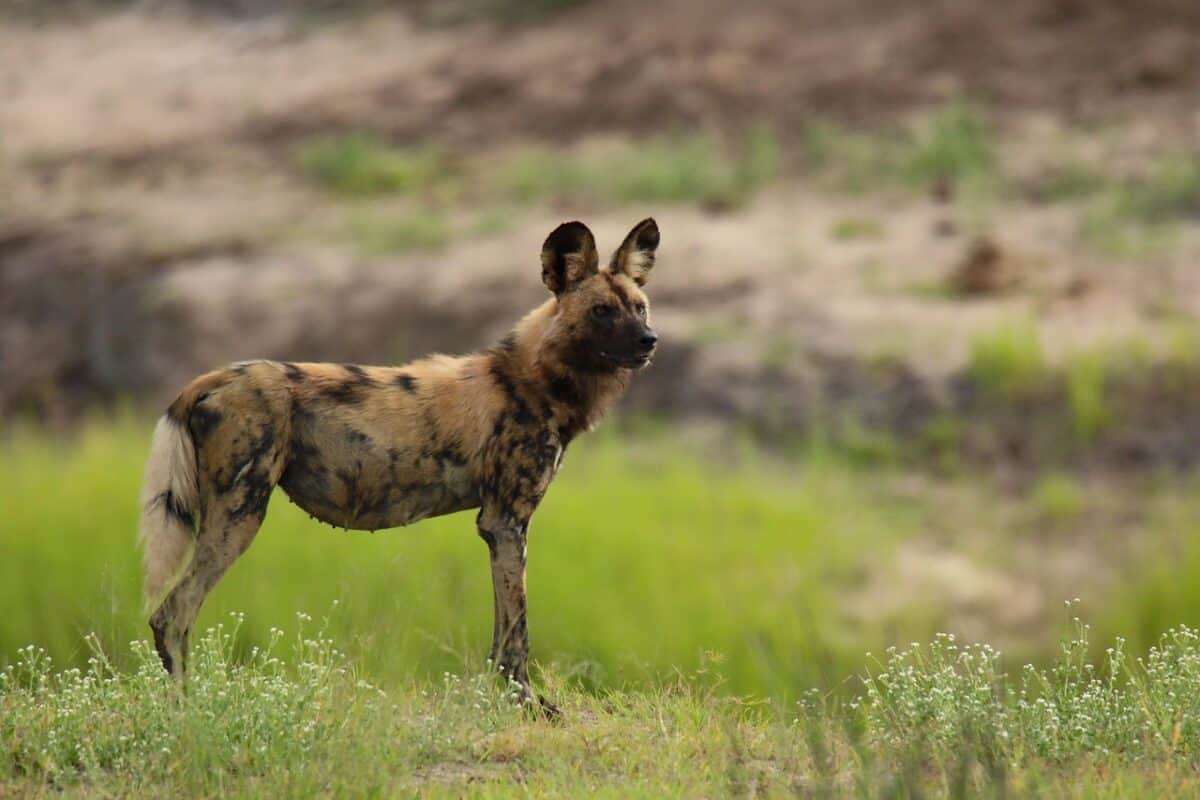
African wild dogs (Lycaon pictus) are perhaps nature’s most successful hunters, achieving a kill rate of over 80%—significantly higher than lions’ 30%. Their hunting success stems from extraordinary teamwork and a surprisingly democratic social structure. Before hunts, pack members engage in “rallies”—playful gatherings where they vocalize and interact, essentially “voting” on whether to hunt. The pack then moves together, maintaining visual contact while spreading out to cover more ground. During the chase, dogs rotate positions, with fresh runners taking the lead while tired ones fall back, enabling them to maintain high speeds over long distances. This relay-style hunting wears down prey through endurance rather than speed alone. Even more remarkable is their food-sharing behavior—after a kill, young pups are allowed to eat first, followed by elderly or sick members, demonstrating a level of altruism rare in the animal kingdom. Their success as a species depends entirely on this coordinated group effort, making them one of nature’s most impressive examples of teamwork.
11. Killer Whales Coordinated Wave Hunting
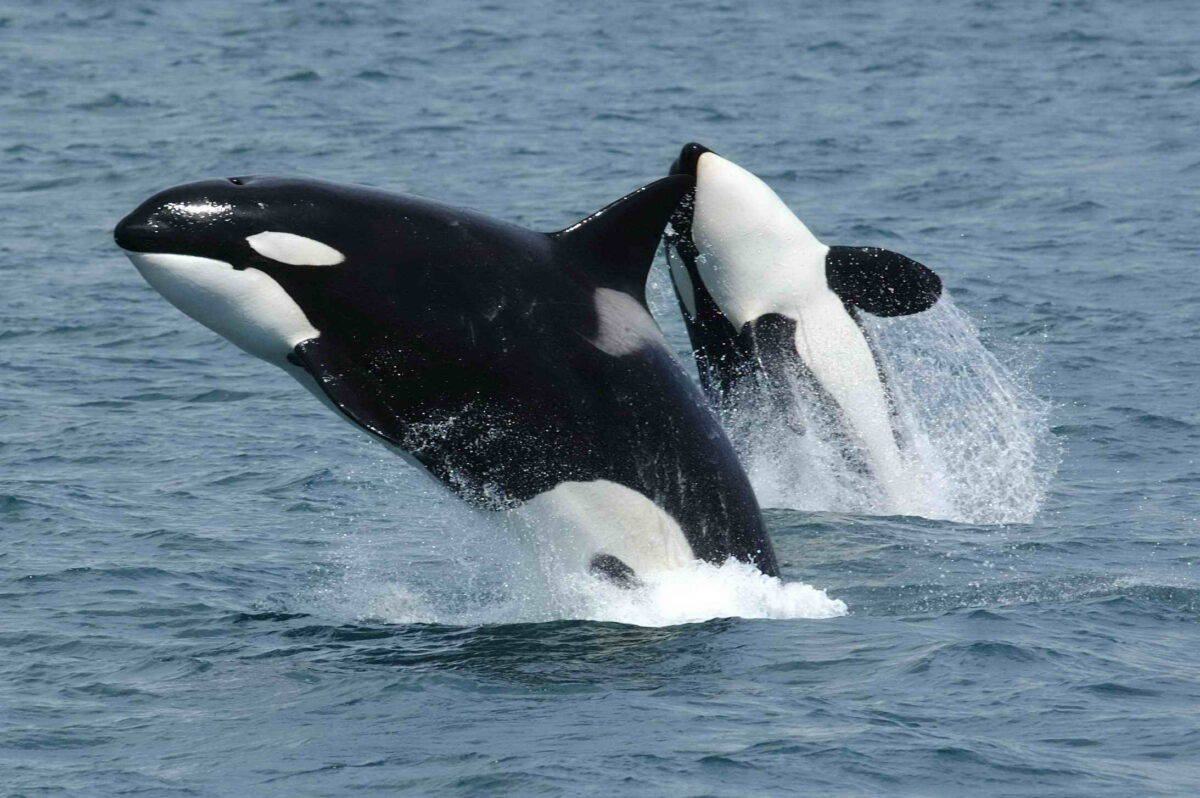
Killer whales (Orcinus orca) display some of the most sophisticated hunting strategies in the ocean, with different populations developing distinct techniques passed down through generations. One of the most dramatic examples of their teamwork is wave hunting, where pods coordinate to create artificial waves that wash seals off ice floes. The process begins with the pod swimming in perfect synchronization, moving side by side to generate a powerful wave. This coordinated swimming requires precise timing and awareness of each member’s position. In the waters of Antarctica, orcas have been observed taking this technique further by deliberately creating waves that crack and tip ice floes, forcing seals into the water. Some pods even practice intentional stranding—briefly beaching themselves to capture prey on shorelines before skillfully wiggling back into deeper water. These complex hunting behaviors aren’t instinctual but culturally transmitted, with adult whales teaching younger pod members through demonstration and practice, creating distinct “cultures” among different orca populations worldwide. Their social learning and coordination demonstrate remarkable cognitive abilities and highlight the evolutionary advantage of teamwork in marine environments.
10. Meerkats Sentinel Systems and Babysitting

Meerkats (Suricata suricatta) have developed an elaborate cooperative system that enables these small mammals to survive in the harsh Kalahari Desert. Their sentinel system represents one of nature’s most organized defense mechanisms. While the group forages, one meerkat takes position as a sentinel, climbing to a vantage point to scan for predators. These sentinels rotate duties approximately every hour, ensuring no individual bears too much of the risk or sacrifices too much feeding time. They use a complex vocabulary of at least 30 distinct calls to communicate specific threats—different sounds indicate whether the danger comes from the air (eagles) or ground (snakes or jackals), allowing the group to respond appropriately. Beyond defense, meerkats share parenting responsibilities through “babysitting cooperatives.” While most of the mob forages, designated babysitters remain at the burrow to protect pups, often going hungry to ensure the young survive. This altruistic behavior extends to “helper” meerkats who assist in raising offspring that aren’t their own, sometimes even nursing pups born to other females. Remarkably, research has shown that pups raised in groups with more helpers have higher survival rates, demonstrating the tangible benefits of their cooperative social structure.
9. Wolves Strategic Pack Hunting

Wolf packs (Canis lupus) operate with military-like precision during hunts, employing strategies that demonstrate both intelligence and social cohesion. Unlike the common misconception of an alpha-dominated hierarchy, wolf packs typically function as family units led by breeding parents who coordinate hunting activities. Their hunting strategy varies based on prey and terrain, but often involves multiple coordinated roles. Some pack members serve as “scouts,” locating prey and assessing vulnerability, while others position themselves strategically as “ambushers” or “drivers” who channel prey toward waiting pack members. When hunting larger animals like moose or bison, wolves demonstrate remarkable risk assessment, carefully testing defenses before committing to an attack. The pack synchronizes its movements to isolate vulnerable individuals from the herd, using their collective understanding of the terrain to guide prey into disadvantageous positions. After a successful hunt, wolves follow a food-sharing protocol that reinforces pack bonds, with breeding wolves usually eating first but ensuring all members receive nourishment. This coordinated hunting and resource sharing has enabled wolves to thrive across diverse environments from the Arctic to desert regions. Their social hunting strategies represent one of evolution’s most successful models of teamwork, allowing relatively small predators to take down prey many times their size.
8. Dolphins Mud Ring Feeding and Herding Techniques

Bottlenose dolphins (Tursiops truncatus) have developed remarkable cooperative hunting techniques that showcase their intelligence and social coordination. One of the most impressive is mud ring feeding, observed primarily in Florida waters. This sophisticated strategy involves a coordinated team effort where one dolphin swims in a circle near a muddy bottom, flapping its tail to create a ring of mud that rises to the surface. This circular mud barrier confuses and traps fish, forcing them to jump over the ring to escape, directly into the waiting mouths of other dolphins positioned around the perimeter. This technique requires precise timing, role specialization, and communication between participants. In other regions, dolphins employ different cooperative strategies, such as herding fish against shorelines or sandbanks in a behavior known as “strand feeding.” Some dolphins have even developed cooperative relationships with human fishers in places like Laguna, Brazil, where dolphins drive fish toward fishermen’s nets, benefiting from the disoriented fish that escape. These culturally transmitted hunting techniques vary between dolphin populations, with specific methods taught between generations through observation and practice. Beyond hunting, dolphins demonstrate remarkable coordination in other aspects of their social lives, including synchronized swimming that strengthens social bonds and collective defense against predators like sharks. Their ability to develop and maintain complex cooperative behaviors demonstrates cognitive capabilities that rival many land mammals.
7. Honey Bees The Ultimate Collective Society

Honey bees (Apis mellifera) represent perhaps nature’s most sophisticated example of coordinated teamwork, functioning less as individuals and more as components of a superorganism. Their hive operates through complex division of labor that evolves throughout each bee’s lifetime. Worker bees progress through a series of specialized roles as they age—starting as cell cleaners, then becoming nurse bees caring for larvae, followed by roles as storers, processors, and guards, before finally becoming foragers in their final weeks of life. This age-based task allocation optimizes colony efficiency. The colony’s collective intelligence emerges through remarkable communication systems, most famously the waggle dance, where returning foragers communicate the distance, direction, and quality of food sources through precise movements. When selecting new hive locations, scout bees employ a democratic decision-making process, with individuals advocating for different locations until consensus emerges. Temperature regulation within the hive demonstrates another level of coordination—bees collectively fan their wings to cool the hive when temperatures rise and cluster together to generate heat when temperatures fall, maintaining the critical brood temperature of 94°F (34°C) regardless of external conditions. During swarming, thousands of bees move as a coordinated unit to establish new colonies, with interim cluster locations and precise timing that maximizes survival chances. Every aspect of bee society, from coordinated defense to food storage and processing, exemplifies the evolutionary perfection of teamwork principles, allowing these small insects to thrive across diverse environments through their collective capabilities.
6. Spotted Hyenas Complex Social Hunting

Contrary to their undeserved reputation as mere scavengers, spotted hyenas (Crocuta crocuta) are actually skilled hunters with a sophisticated social structure that enables complex cooperative behaviors. Hyena clans, which can contain up to 80 individuals, operate under a matriarchal system with intricate social hierarchies that govern hunting privileges and resource access. Their hunting strategies demonstrate remarkable flexibility and coordination, adapting techniques based on prey type and environmental conditions. When pursuing large prey like zebra or wildebeest, hyenas employ coordinated ambush techniques where some clan members distract the target while others attack from behind. For smaller prey, they utilize relay hunting, where individuals take turns chasing to maintain constant pressure while conserving energy. Research has documented their ability to coordinate across several kilometers using their distinctive whooping calls, effectively communicating strategic information during hunts. Beyond hunting, hyenas demonstrate complex cooperative behaviors in territory defense, with clan members responding collectively to threats from rival clans or other predators. Perhaps most remarkably, female hyenas invest in communal den systems where cubs are raised collectively, with mothers allowing non-offspring nursing in a form of reciprocal altruism that strengthens clan bonds. Their social intelligence extends to recognition of complex relationships within the clan, including knowledge of their rank and the rank of others, which influences hunting partnerships and resource sharing. These sophisticated social behaviors challenge simplified views of predator behavior and demonstrate how teamwork has evolved independently across different mammalian lineages.
5. Emperor Penguins Huddles for Survival

Emperor penguins (Aptenodytes forsteri) brave Antarctica’s brutal winter conditions through one of nature’s most impressive displays of cooperation—the huddling formation. As temperatures plummet to -40°F (-40°C) with winds exceeding 90 mph (150 km/h), these birds form densely packed huddles of thousands of individuals, creating a collective defense against the cold. This behavior isn’t merely instinctual grouping but involves sophisticated coordination. The huddle functions as a dynamic system where penguins continuously rotate positions in slow, wave-like movements. Birds at the protected center gradually move outward, while those exposed on the perimeter work their way inward, ensuring equal sharing of warmth and cold exposure. This rotation can shift a penguin’s position by up to 45 feet (14 meters) within the huddle over hours. Thermal imaging research has revealed that huddle surface temperatures can reach 95°F (35°C) even when external temperatures are below -40°F. This cooperative behavior is particularly crucial during the male penguins’ two-month incubation period, when they balance eggs on their feet while females return to sea to feed. The huddle allows penguins to reduce their metabolic rates by up to 50%, conserving critical energy reserves during their long fast. Without this precisely coordinated system of shared warmth, individual penguins would not survive the extreme conditions, making it one of the most striking examples of how cooperation enables species to adapt to environments that would otherwise be uninhabitable.
4. Army Ants Living Architecture and Coordinated Raids
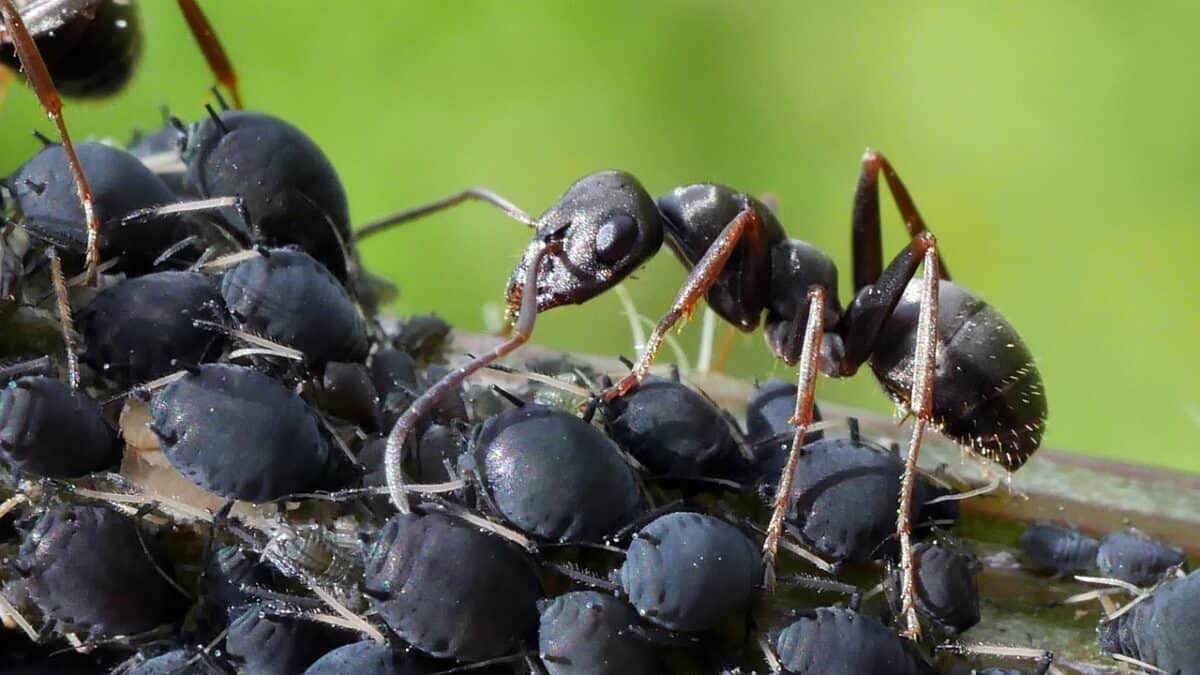
Army ants (Eciton burchellii) demonstrate perhaps the most extreme form of cooperation among insects, functioning as a unified entity through collective behaviors that blur the line between individual and colony. Their nomadic colonies, which can contain over 700,000 workers, operate as a superorganism with specialized castes performing distinct roles during massive coordinated raids. These raids form fan-shaped swarms up to 65 feet (20 meters) wide that advance through the forest undergrowth, with specialized soldier ants forming protective flanks while workers systematically hunt prey. The raid’s front edge consists of coordinated teams that overwhelm prey through sheer numbers and precision, capturing everything from insects to small vertebrates with an efficiency that can clear acres of forest floor of arthropods in a single day. Perhaps most impressive is their ability to create “living architecture”—structures formed entirely from their bodies. At night, workers interlock legs and mandibles to create bivouacs that protect the queen and larvae, forming walls and chambers that regulate temperature and humidity. When crossing gaps in terrain, army ants construct living bridges by linking their bodies, creating structures that adjust their position and thickness in response to traffic flow for maximum efficiency. Some species even form living rafts during floods, with workers creating waterproof layers that keep the queen and brood dry. These self-assembling structures represent one of nature’s most remarkable examples of emergent intelligence, where relatively simple individual behaviors combine to create complex, adaptive structures through coordinated teamwork.
3. Lions Strategic Pride Hunting
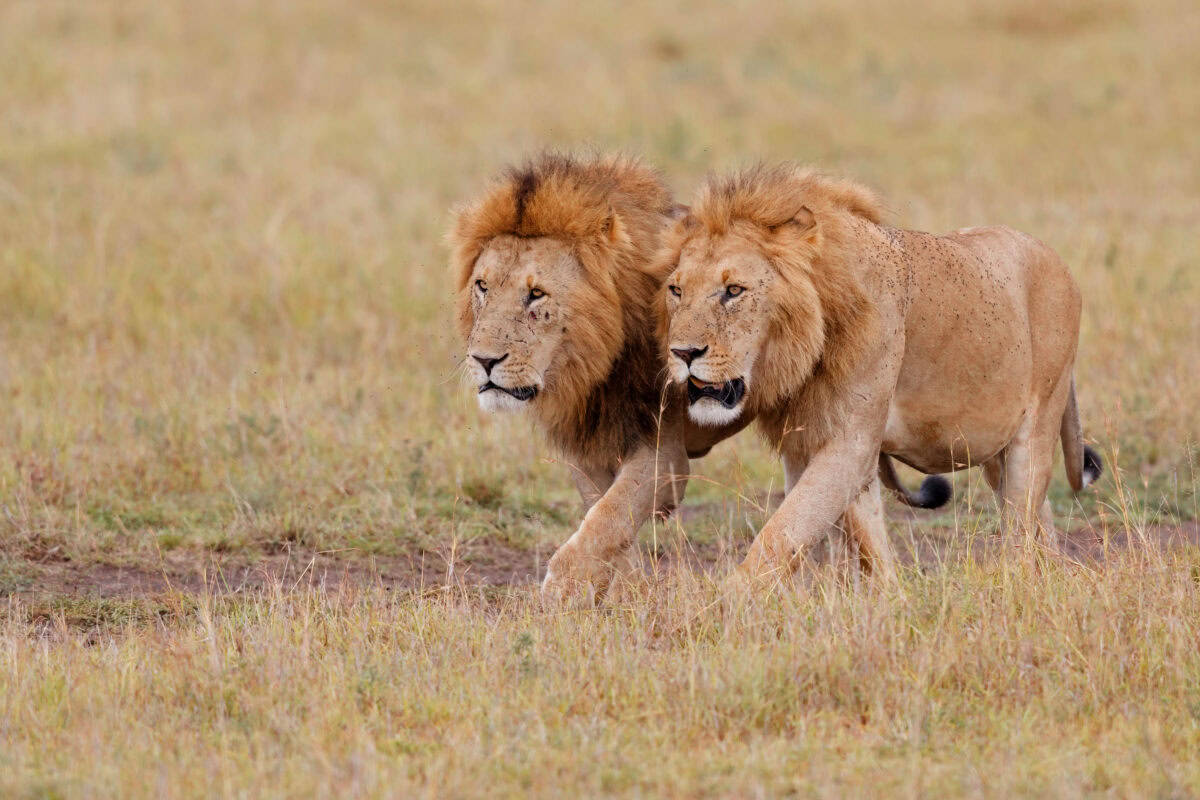
Lions (Panthera leo) have developed hunting strategies that leverage teamwork to overcome their relative lack of speed compared to many prey species. Contrary to popular belief, lionesses perform most hunting duties and have evolved sophisticated cooperative techniques that vary based on prey type, terrain, and hunting conditions. When hunting in open plains, lionesses employ the classic encirclement strategy, with individuals assuming specific roles. Some pride members act as “wings,” circling wide to flank prey, while others position themselves as “centers” that initiate the chase once prey is effectively surrounded. This formation maximizes capture probability by cutting off escape routes. In densely vegetated areas, lionesses adapt by using coordinated ambush tactics, with some members concealing themselves while others deliberately drive prey toward the hidden ambushers. Their communication during hunts involves subtle visual cues—ear positions, tail movements, and body language that coordinate timing and positioning without alerting prey. After successful hunts, pride members follow a complex sharing protocol that, while often appearing contentious, actually follows predictable patterns that maintain social cohesion. Males typically feed first, followed by dominant females and then subordinates and cubs, with this hierarchy balancing immediate needs against long-term pride stability. This social coordination extends beyond hunting to territorial defense and cub protection, where adult lions work together to defend resources and offspring against external threats. The evolution of these cooperative behaviors has allowed lions to dominate as apex predators across diverse African ecosystems, demonstrating how teamwork can create ecological advantages even for physically powerful species.
2. Harris’s Hawks Cooperative Hunting in Flight
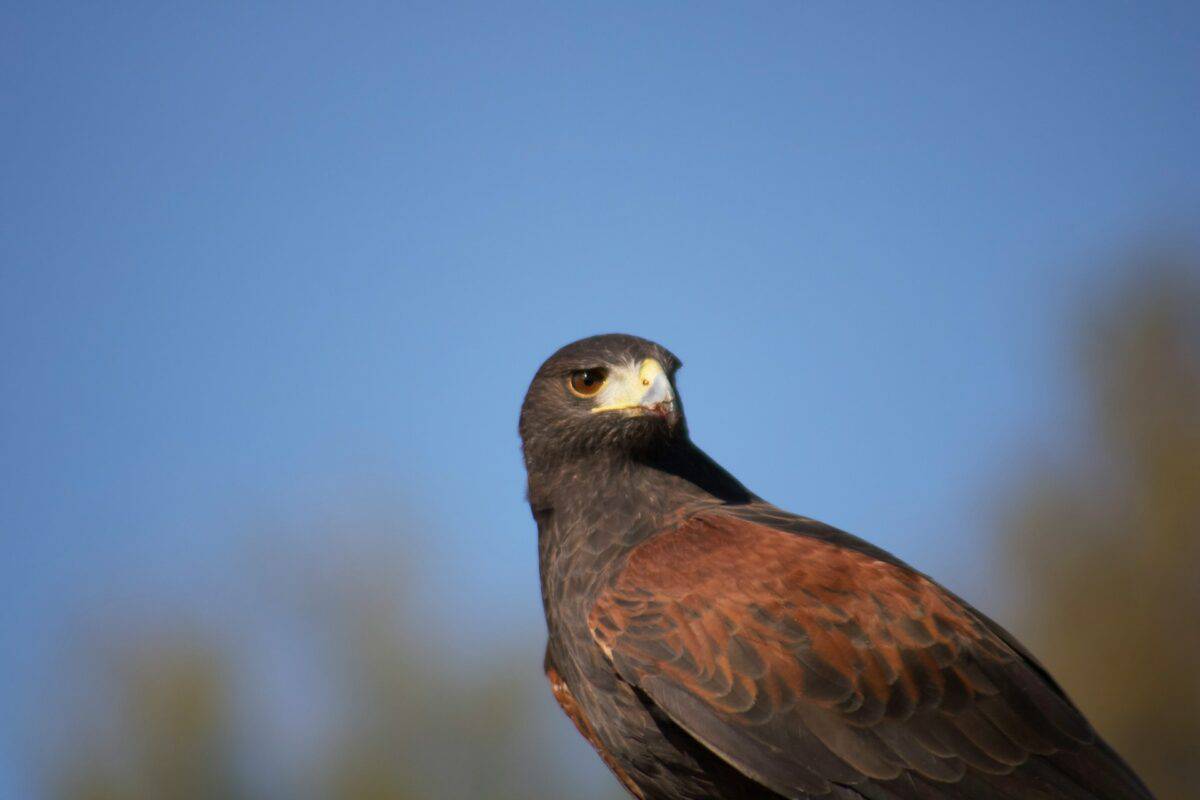
Harris’s hawks (Parabuteo unicinctus) stand out among raptors for their exceptional cooperative hunting behavior, a rarity in the bird world where most species hunt solitarily. These hawks of the southwestern United States and Latin America hunt in family groups of 2-7 birds, employing sophisticated techniques that leverage their collective intelligence. Their most distinctive strategy, known as “relay hunting,” involves coordinated pursuit where hawks take turns chasing prey, preventing exhaustion of any individual bird while maintaining constant pressure on the target. When pursuing prey that seeks refuge in dense brush, Harris’s hawks employ the remarkable “flush and ambush” technique—some birds deliberately crash into vegetation to flush hidden prey while others position themselves strategically to intercept escaping animals. Perhaps most impressive is their “stack hunting” behavior, where hawks stand on each other’s backs in a vertical tower formation (sometimes called a “hawk stack”) to gain better vantage points when searching for prey in dense habitat. After successful hunts, Harris’s hawks demonstrate orderly food sharing, with dominant birds feeding first but allowing subordinates access in a system that maintains group cohesion. Research indicates that hunting success rates increase dramatically with group size—pairs are nearly three times more successful than individuals, while groups of four or more can be up to six times more effective. This rare example of avian cooperative hunting demonstrates how teamwork can evolve independently across different animal lineages when it provides significant survival advantages.
1. Crows Collaborative Problem Solving
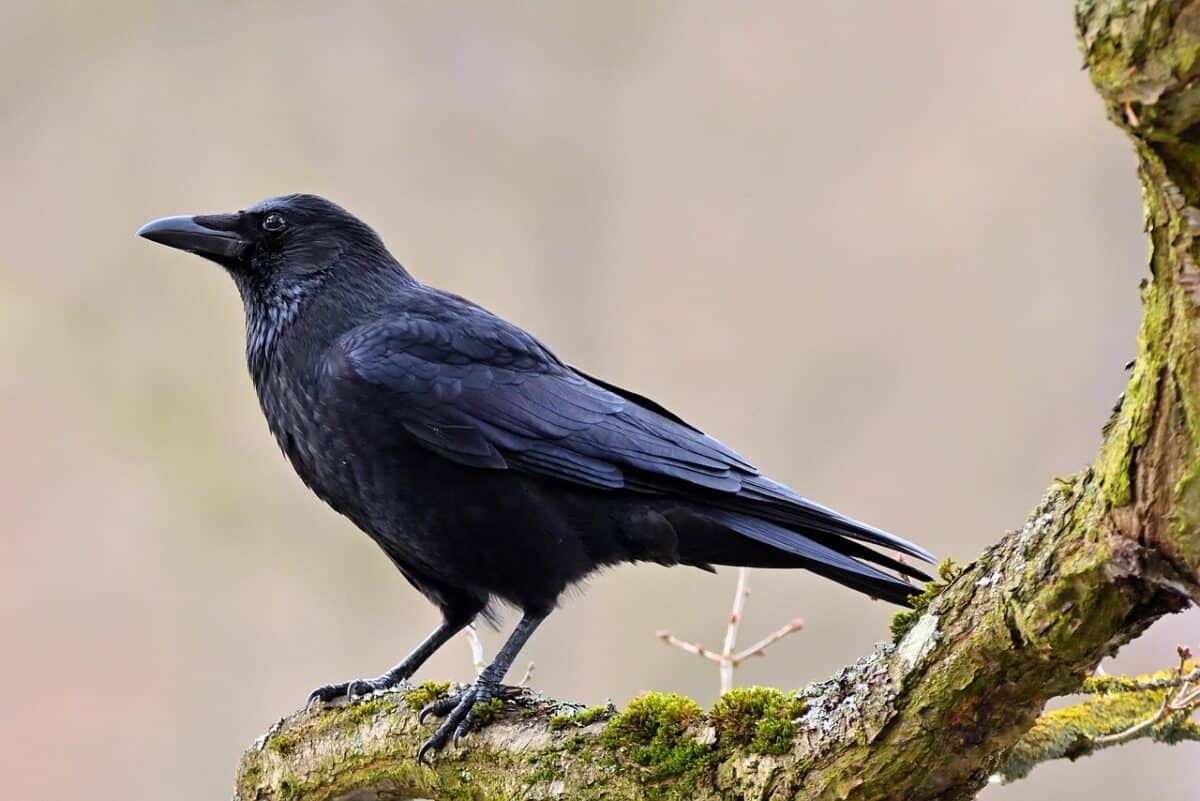
Crows and their corvid relatives demonstrate remarkable collaborative problem-solving abilities that rival those of primates. New Caledonian crows (Corvus moneduloides) in particular have been observed working in pairs to tackle complex challenges that would be impossible for a single bird. In laboratory settings, these crows have successfully completed cooperative tasks requiring one bird to hold a container steady while another retrieves food—showing understanding of complementary roles and coordination. In the wild, American crows (Corvus brachyrhynchos) form sophisticated cooperative groups for territory defense, employing sentinel systems where individuals take turns watching for predators while others forage. When mobbing predators like hawks or owls, crows coordinate their attacks from different angles, effectively harassing much larger birds through synchronized teamwork. Their social learning abilities allow successful strategies to spread through crowds, creating local “cultures” of problem-solving approaches. Perhaps most impressive is their “funeral” behavior, where crows gather around dead companions in what researchers believe may be information-sharing about potential dangers. This behavior demonstrates both social bonding and collective risk assessment. Crows also form alliances that persist across seasons, remembering individuals who have helped or hindered them in the past—a cognitive ability previously
Conclusion: Nature’s Blueprint for Cooperation
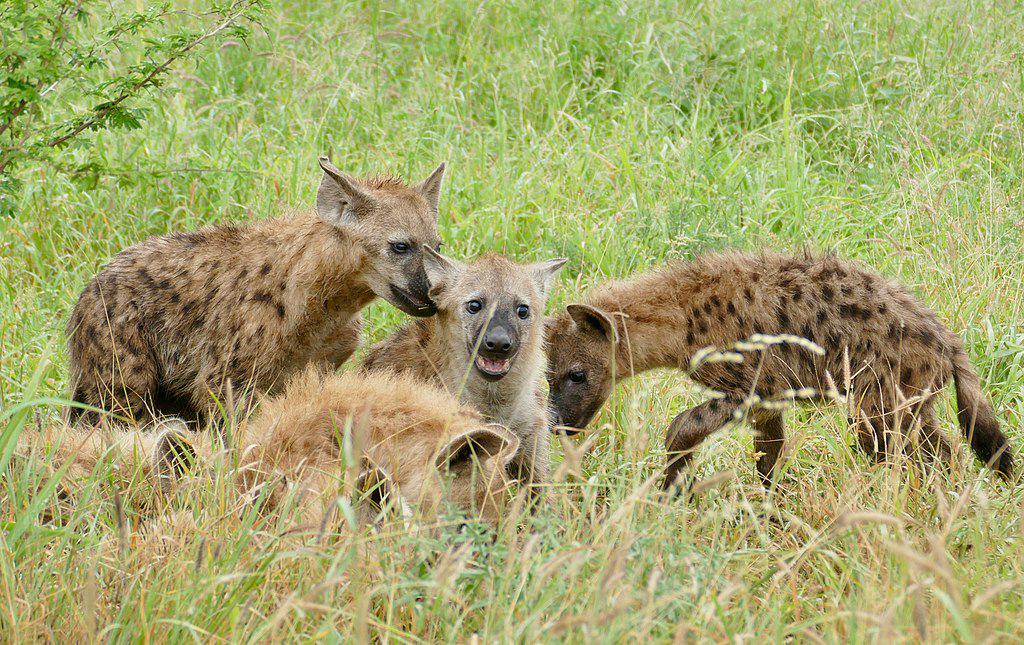
From the deepest oceans to the most unforgiving deserts, teamwork in the animal kingdom is not just a survival tactic—it’s a powerful evolutionary strategy. The species highlighted in this article showcase the stunning diversity of cooperative behavior, from the intricate social systems of honey bees and the coordinated raids of army ants to the democratic hunts of African wild dogs and the intelligent problem-solving of crows. These examples reveal that collaboration is not exclusive to humans; it’s a shared trait that has emerged across distant branches of the evolutionary tree. Whether through familial bonds, structured roles, or learned traditions, these animals demonstrate that working together often means living longer, thriving in harsh environments, and achieving goals no individual could accomplish alone. In observing their teamwork, we’re reminded that success—whether in the wild or in our own lives—is rarely a solo endeavor.
- 14 Rare Horse Breeds You Didn’t Know About - August 9, 2025
- The Largest Wildfire to Ever Burn in the US - August 9, 2025
- The Secretary Bird A Raptor That Hunts on Foot - August 9, 2025

